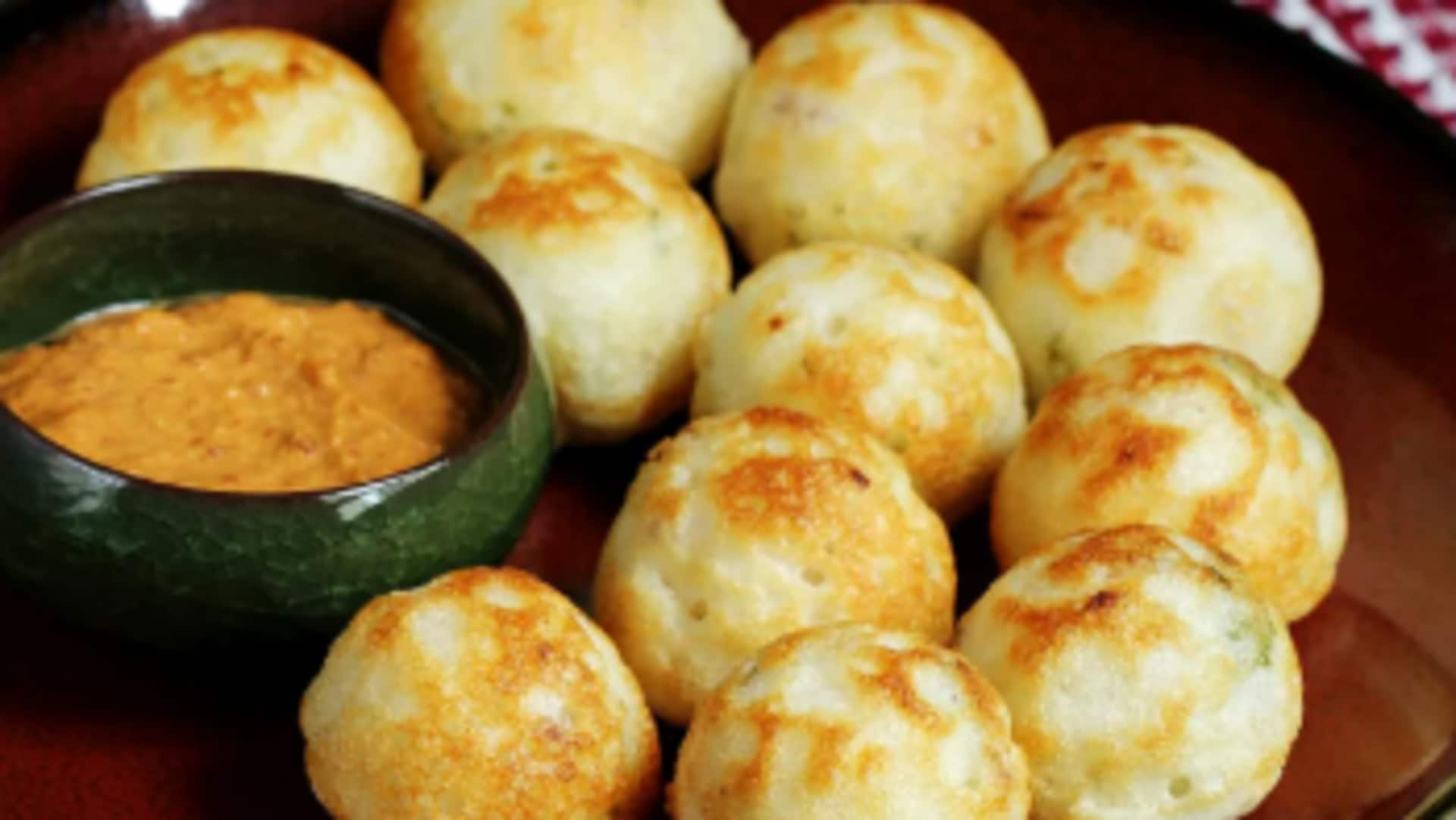
From temples to tables: The story of kuzhipaniyaram
What's the story
A beloved Tamil Nadu dish, kuzhipaniyaram has entered modern kitchens across the world.
Traditionally, this dish is made using fermented rice and lentil batter and cooked in a special pan with small indentations.
It finds its origins deep-rooted in Tamil culture, where it was often made for breakfast or as a snack.
Today, kuzhipaniyaram is celebrated for its versatility and ease of preparation.
Classic approach
Traditional preparation methods
Traditionally, kuzhipaniyaram is prepared by soaking rice and urad dal overnight and grinding it to a smooth batter.
This batter is fermented for a few hours.
The fermented batter is poured into the cavities of an iron or non-stick kuzhipaniyaram pan and cooked until golden brown.
This classic method makes sure that the dish remains true to its taste and texture.
Contemporary twist
Modern variations
In modern kitchens, kuzhipaniyaram has evolved with different ingredients mixed in the basic batter for an enhanced flavor.
Some popular variations include adding grated vegetables like carrots or zucchini, spices such as cumin seeds or green chilies, and even cheese for a fusion twist.
These adaptations have made kuzhipaniyaram more appealing to diverse palates while maintaining its core identity.
Nutritional value
Health benefits
Kuzhipaniyaram is also packed with health benefits, thanks to its basic ingredients—rice and lentils—which are rich sources of carbs and proteins, respectively.
Notably, the fermentation process enhances the bioavailability of nutrients such as B vitamins and eases digestion by facilitating the growth of gut-friendly bacteria.
Plus, the use of minimal oil while cooking makes it a healthier snacking option than deep-fried ones.
Cooking tips
Tips for perfect kuzhipaniyarams
To get perfectly cooked kuzhipaniyarams every time, make sure your batter has the right consistency—not too thick nor too runny—and is well-fermented to get the best flavor.
Preheat your pan adequately before pouring in the batter. This helps create crispy exteriors while keeping interiors soft but fully cooked through.
Avoid burning them on high heat settings, which can lead to uneven results overall when done incorrectly at home kitchens across different regions globally today.